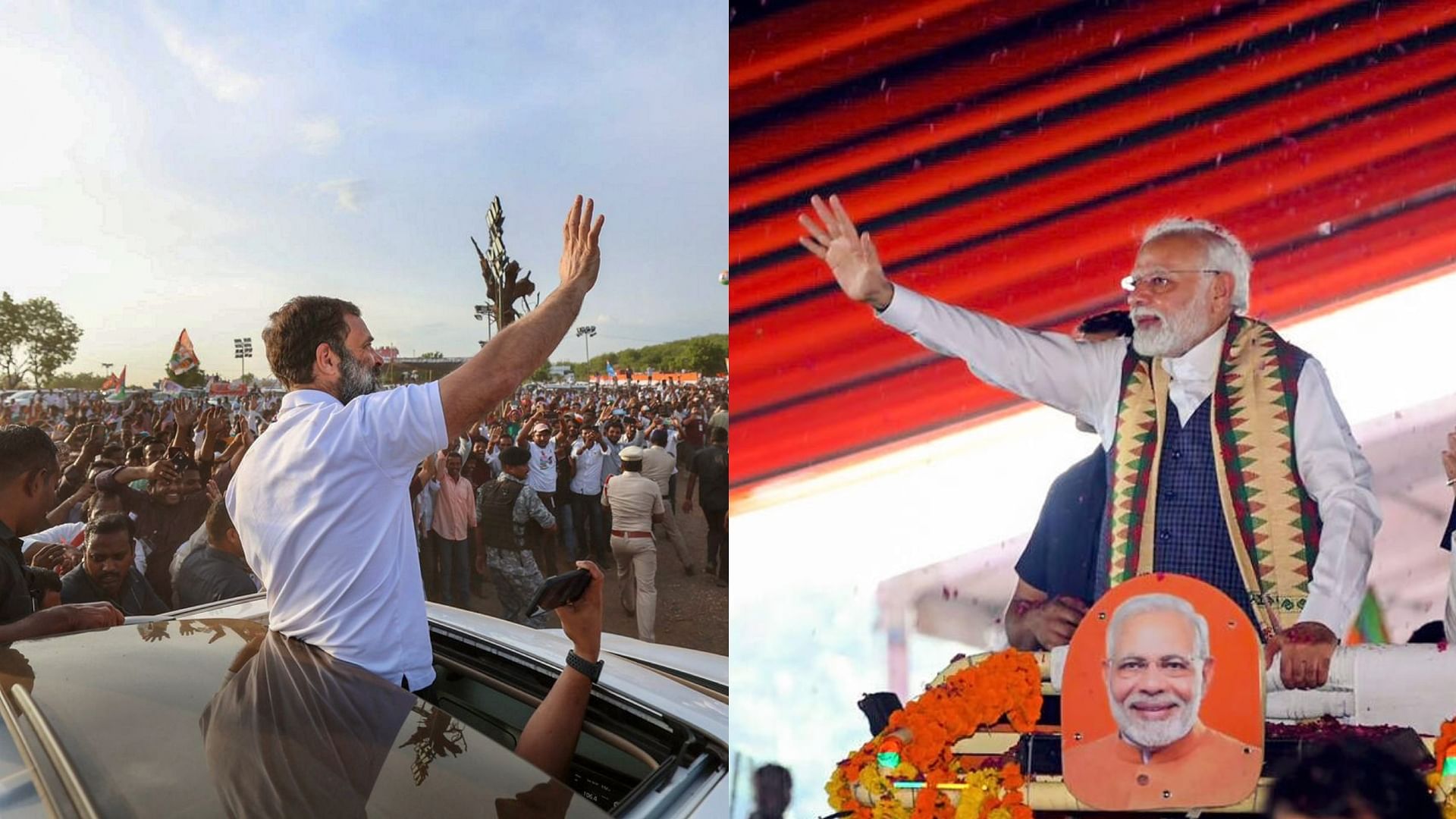
One of the major contributors to the escalating cost of campaign is motorised transport. In every constituency there are thousands of vehicles used for electioneering.
Credit: PTI Photos
The schedule for the general elections is expected to be announced anytime now. As the political parties and the Election Commission of India (ECI) gear up to hold this mammoth exercise, it is being held in the background of climate-induced catastrophic memories that continue to haunt us as a nation. Bengaluru, India’s third largest city, is facing the worst water crisis in 500 years; likewise, the subsidence in the mountains, coastal erosion in peninsular India, vehicular pollution reducing life expectancy in urban population, the changing agricultural patterns, are all because of climate-induced reasons — and are major features of Climate Change in India.
A green campaign
The election to 543 seats will see massive mobilisation of the people by political parties as well as individuals. Examining past promises through a climate lens is another exercise, while the focus now should be on what are political parties doing now to reduce their carbon footprint.
In 2019, the ECI, along with the National Green Tribunal (NGT) and the pollution control board, issued an advisory on the election material that should be used during electioneering. How to ensure a low carbon footprint during the elections should be the overarching framework in which the ECI and the political parties must engage themselves.
The practice of reaching out to the electorate is a healthy form of democracy; however, the way in which it is done needs to be altered. Over the last few decades, motorised transport has been a dominant form of campaigning. The 2019 Lok Sabha election saw a total of 8,040 candidates contest, and this was considered to be the costliest election ever in India’s history. One of the major contributors to the escalating cost of campaign is motorised transport. In every constituency there are thousands of vehicles used for electioneering. In the recent years, gas-guzzling SUVs seem to be the preferred mode of transport for candidates among the major political parties.
Carbon footprint
If an average of 1,000 vehicles are used in a Lok Sabha constituency for election-related work, for an average 30 days, with each consuming about 15 litres of fossil fuel per day, the total campaign across India would burn a total of about 244 million litres of fossil fuel! Assuming diesel is being used (a litre of diesel releases roughly 2.7 kg of carbon dioxide (CO2) into the atmosphere), this would mean a total of about 660 million kilograms of CO2 will be emitted into the atmosphere over the next few weeks’ time. We surely need to find a better, more climate-friendly way to conduct election campaigns in India.
The rampant and unbridled use of plastic, though banned, and flex (which continues to be used officially in the election campaign) banners have a very huge carbon footprint. It not just produces huge amounts of carbon emissions from its manufacturing to disposal, but flex banners are also among the worst non-biodegradable materials. If the carbon footprint of such banners and campaign literature is assessed, it would show an alarming figure as well. On closer scrutiny, one might even find the ECI and the government using such plastic material.
What can be done?
The ECI should take the initiative in this regard. Some of the previous interventions have been noteworthy, like the ban on plastic material (though still used at some places), and; that not more than three cars should be a part of the candidate’s fleet while filing nomination papers. Good as they are, they are insignificant when we look at the larger picture and damage caused.
The ECI must create a framework under the UNFCC and should create a template for measuring the total carbon footprint for an individual candidate, and that of the political party. Periodic reviews of this must be conducted in accordance to the principles laid down on the total expenditure allowed per candidate.
If this data is made public, it could force candidates to adopt greener measures. Such an exercise will empower the citizens to know the total carbon footprint and usage of respective candidates and their political parties.
This might appear to be a Herculean task now, but we need to start now for it to snowball into an major talking point during the election campaign.
(Tikender Singh Panwar is former Deputy Mayor of Shimla)
Disclaimer: The views expressed above are the author's own. They do not necessarily reflect the views of DH.